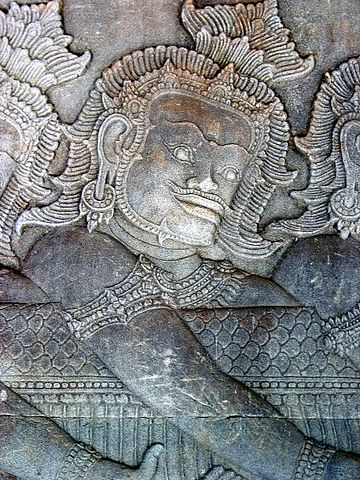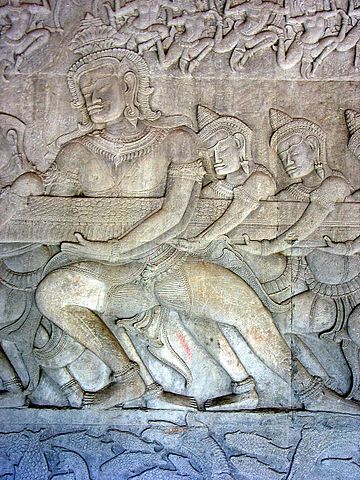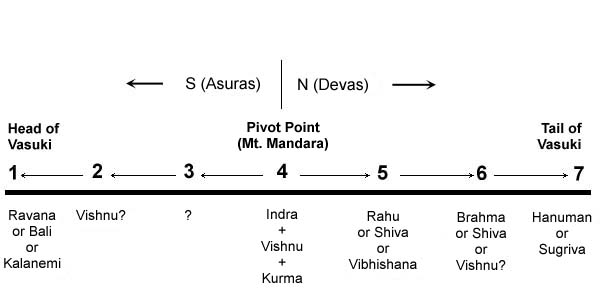





South wing of east gallery
Angkor Wat
In this, the most celebrated of the Angkor reliefs, gods and demons cooperate in Churning the Sea of Milk, in order to produce an elixir of immortality. Asuras (demons) pull the front half of a cosmic snake; the devas (gods) pull the rear half. The snake, Vasuki, wraps around a pivot, Mount Mandara. The back-and-forth motion, a sort of cosmic tug-of-war, churns the ocean.
This myth, and the Angkor relief that depicts it, very likely have astronomical significance, as proposed by Mannikka (pp.161-172). The Sea of Milk, along with Vasuki, can be identified as the Milky Way that undulates across the night sky. The central pivot is shadowed (sic) by a pillar during the spring and autumn equinox, and similarly the endpoints of the scene are shadowed at the summer and winter solistice. Moreover, the total number of figures (devas + asuras) pulling on the snake, plus an appropriate number of days for the duration of the equinoxes, adds up to half a year, so that the entire relief may symbolize a solar calendar.
As indicated in the diagram above, the relief divides naturally into two sides. Asuras are on the left, devas on the right, and Vishnu in the middle holding the pivot. Three of the asuras, and three of the devas, are larger than the others. The six large figures could correspond to months of the half-year, as the small figures could correspond to days. Different mythological identities have been suggested for the large figures, as listed in the diagram. Among so many possibilities, a conservative suggestion would be: 1 = Ravana, 5 = Rahu, 7 = Hanuman, 2-3-6 = unidentified.

|

|

|